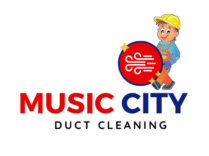When it comes to safeguarding your home or workplace from the potential hazards of mold, understanding the mold inspection cost is crucial. Mold infestations can pose health risks, particularly for individuals with allergies or respiratory conditions.
This informative article will delve into the average expenses associated with mold inspections, the factors influencing these costs, and what you can anticipate during the inspection process. So, let’s explore the question: How much does a mold inspection cost?
How Much Does a Mold Inspection Cost? Exploring Factors and Services
The expense of a mold inspection can fluctuate based on various factors, such as property size and location. You can expect to invest between $250 and $500 for a standard commercial mold inspection. This fee covers several essential services:
- A certified inspector’s visit to your property
- The assessment of mold presence
- The collection of swab samples for laboratory testing
- The provision of a comprehensive report detailing the findings
To optimize cost-effectiveness, consider companies offering initial assessments and test results within a single service package. Some providers even extend discounts for multiple inspections conducted simultaneously or within a specified timeframe, which can result in substantial savings.
Factors That Impact Mold Inspection Costs
Several variables influence the overall cost of a mold inspection:
Size of the Affected Area: A larger mold-infested area will naturally lead to a higher inspection cost.
Severity of Mold Growth: Extensive mold proliferation necessitates more time and effort for inspection and potential remediation, thereby increasing costs.
Location of the Property: Urban areas and large cities generally command higher inspection prices than rural regions, mainly due to differences in the cost of living.
Type of Mold: Hazardous molds like black mold require specialized handling and safety measures, making inspections for such molds costlier.
Accessibility of Affected Areas: If mold is concealed in hard-to-reach locations like crawl spaces or attics, the inspection process becomes more time-consuming and might require specialized equipment, raising costs.
Testing Methods Used: Specialized testing methods like air sampling or surface swabbing may sometimes be necessary, adding to the overall inspection cost.
Benefits of a Mold Inspection
Investing in a professional mold inspection offers two primary advantages:
- Health Protection: Mold inspections help identify potential sources of dangerous mold growth, safeguarding the health of property occupants.
- Cost Savings: By detecting mold early, you can mitigate the need for extensive remediation, ultimately saving you money in the long run.
What to Expect During a Mold Inspection
A typical mold inspection involves a certified mold inspector conducting a thorough visual assessment of the property. During this process, the inspector will:
- Look for signs of mold growth, such as water stains, discoloration, and musty odors.
- Assess moisture levels using tools like moisture meters or thermal imaging cameras to determine if excessive moisture contributes to mold growth.
- Collect mold samples for laboratory analysis if mold is detected, identifying the type and severity of the infestation.
Following the inspection, the mold inspector will provide a detailed report outlining findings and recommendations for remediation. They may advise hiring a professional mold remediation company to handle cleanup in cases of extensive mold growth.
Tips for Finding an Affordable, Trustworthy Inspector
When seeking an affordable and reliable inspector, consider the following key factors:
- Seek recommendations from friends, family, or colleagues who recently used an inspector.
- Verify the inspector’s credentials, including years of experience and industry certifications.
- Check for state or local regulations governing inspection companies and read online reviews to assess their reputation and affordability.
- Compare prices among inspectors to find a company that aligns with your budgetary needs while maintaining quality service.
Conclusion
Mold inspections are a vital step in ensuring the safety of your property. Understanding the cost of a mold inspection is essential for proper budgeting. The benefits of hiring an inspector far outweigh any associated expenses, offering peace of mind and protection from potential health hazards. Remember to research and choose an inspector wisely to ensure a reliable job at an affordable rate.
By staying informed and proactive, you can effectively address mold growth issues in your property, saving time and money in the long term. If you have any questions or need more information about our services, please don’t hesitate to contact us. Your diligence in dealing with mold risks is a wise investment in the well-being of your property and its occupants.

